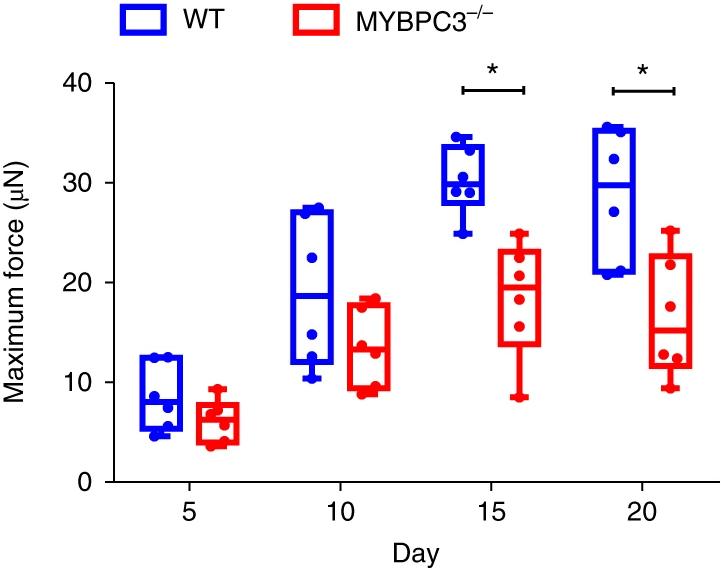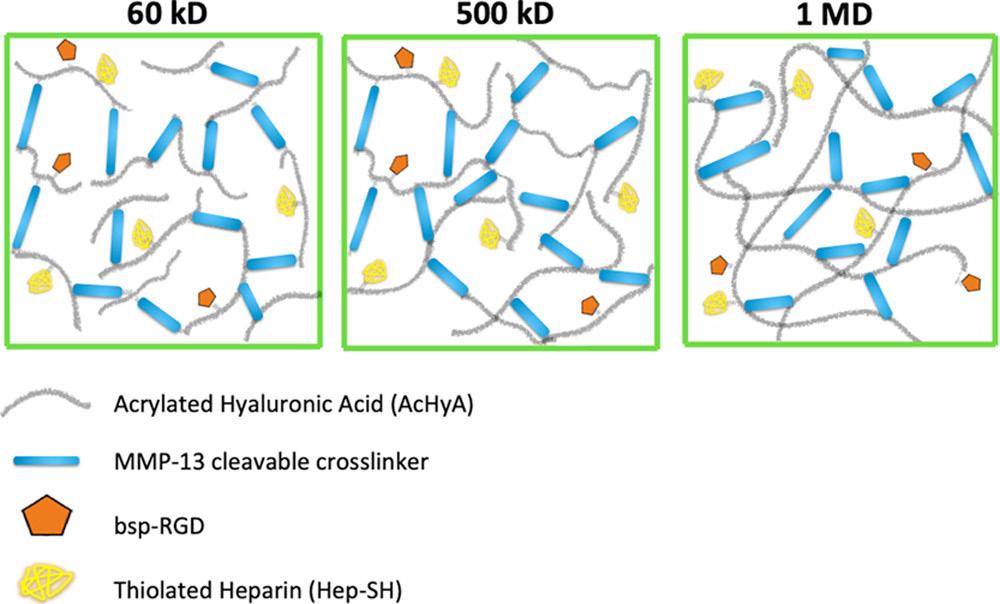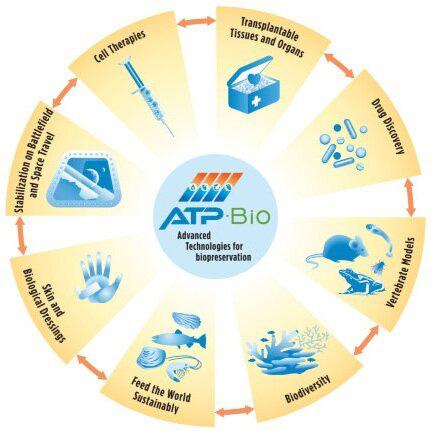
14 minute read
Applications of Materials Science: From Modeling To Medical Use (Dr. Kevin Healy
APPLICATIONS OF MATERIALS SCIENCE: FROM MODELING TO MEDICAL USE
INTERVIEW WITH PROFESSOR KEVIN HEALY
Advertisement
BY ESTHER LIM, ALEXANDER PETERSON, SABRINA WU, ANANYA KRISHNAPURA
Professor Kevin Healy is a Fandrianto and Salfia Halim Distinguished Professor of Engineering in the Departments of Bioengineering and of Materials Science and Engineering at the University of California, Berkeley. He currently leads the ATP-Bio effort, an interdisciplinary project that aims to develop key biopreservation technologies. Professor Healy is also the principal investigator of the Healy Laboratory, which combines biology and materials science in an effort to better understand core biological phenomena and develop biomedical innovations. Currently, the laboratory is conducting research regarding regenerative medicine and microphysiological systems. In this interview, we discuss the major goals of the ATP-Bio effort in addition to his laboratory’s research on modeling cardiomyopathy and applying hyaluronic acid-based hydrogels in medicine.
BSJ: Your research focuses on material science and bioengineering, and it often has applications in medicine. What drew you to the intersectionality between these fields?
KH: As an undergraduate, I went to the University of Rochester as a chemical engineering major. I was an undergraduate from 1979 to 1983, and right around the late 70s, the artificial heart became this big thing. There was a society, which still exists, called the American Society for Artificial Internal Organs (ASAIO). Their big vision was to make an artificial heart and to add plastic and other materials. The vision never really came to fruition, but it got me excited. The question of how to create an artificial organ became a very interesting topic for me. When I was a chemical engineering major, I was allowed to pick three electives and other technical electives. Since there was not a bioengineering department at the time, I took my electives in the medical school in radiation biology and biophysics. One graduate biophysics class was particularly interesting. I thought, “Wow, graduate school is a lot better than undergraduate. You do not really take any tests and you get to think a lot.” So, I really wanted to do some research.
I started in a biophysics laboratory at Rochester, where we were interested in blood flow. I would make acrylic molds from gallium casts of rabbit ears so that the splitting of the blood vessel was accurate. I had to count how red blood cells differentially went into different parts of the blood vessel as it splits, and it turns out it is not symmetric. It has to be asymmetric or else there would be no blood cells in your smallest capillaries. This is called plasma skimming. I thought this was really interesting stuff, but I had a problem: the blood would clot in this little device all the time. I asked, “Why don’t we make this into something where the blood doesn’t clot?” They said, “Go ahead, Kevin. You’ll be a multi-millionaire in a couple weeks if you could figure that one out.” It is still one of the major problems in biomaterial science today—trying to design blood contact materials. But I really wanted to study this further, and that is how I got into biomaterial science.
BSJ: One of your papers deals with contractile deficits in cardiac microtissues you engineered. How were you able to model a diseased state of the heart in these microtissues?
KH: The first thing we had to do was make something that the cells were going to sit on. We were trying to make an array to organize collagen fibers, and we used two-photon polymerization (TPP) in order to do so. TPP is a light-active way to form a polymer;
the light activation initiates the chemical reaction. An example of this is if you have gone to the dentist and the dentist uses a blue light wand if you have a cavity. They are doing photon-initiated polymerization in your mouth. By changing the optical parameters of the light, we were able to make an array of these fibers and control parameters like the Z height, the spacing of the pitch, and the diameter, all of which became important.
Now, when considering the cells that we have to put onto the chips, using heart cells from a rabbit or a rodent would not be very useful. Different species, especially their hearts, have different physiological parameters. Thus, using human cells in heart-type research is really important. In 2009 I did a sabbatical at The Gladstone Institute of Cardiovascular Disease in San Francisco, where I got involved with induced pluripotent stem cell technology. Using these induced pluripotent stem cells, you can work with human cells to create a microtissue. From 2009 onwards, it took another six or seven years until the field of stem cell biology developed to the point where we can now introduce genetic deficiencies in cells and compare them to the healthy cells. That is the ultimate beauty of using human cells and induced pluripotent stem cell technology. If we make a defect in the stem cell state, then we have an infinite source of cardiomyocytes that have that defect if it is carried through. These cells, in turn, can be used to model a disease state.
BSJ: How did your microtissue model employing diseasestate cells demonstrate a “contractile deficit”? What are the implications of this deficit on heart pathology in general?
KH: As I stated, we wanted to model cardiomyopathy. This myosin-binding protein C defective cell line, MYBPC3-/, was what we used. There are two major cardiomyopathies; one is hypertrophic cardiomyopathy, and the other is dilated cardiomyopathy. If you do a genome-wide analysis, you will see that some percentage of the population that has hypertrophic cardiomyopathy has this gene mutation in MYBPC3, and the other part of the population has dilated cardiomyopathy. Thus, in the
paper, we were trying to figure out what this system really represents or causes.
We measured the contraction force exerted by microtissues made of wild-type versus MYBPC3-/- cells, and we found that over time, we see an increase in maximum force. If you take this force and multiply it by the velocity (how fast the tissue is contracting), you can plot the power. The power is a proxy for cardiac pumping and cardiac output. When you overlay the curves tracking power over time for both wild-type and MYBPC3-/- cells (Figure 1), they look kind of similar. If we take the area under the curves, they are basically almost identical. You have to think about that for a moment. The nearly identical areas tell you that the power for both cell lines may be equal, but the contractile force with the wild-type cells is much greater for this power compared to the MYBPC3-/- cells. This is the key finding.
Now, cardiomyopathies are progressive diseases, and we did not continue the experiment past 20 days, but you might imagine that the maximum force exerted by the wild-type, healthy cells is going to increase over time, while the maximum force exerted by the MYBPC3-/- disease-state cells will decrease, leading to a contractile deficit.
BSJ: We also read your paper on the effects of hyaluronic acid (HyA) macromer molecular weight on hydrogel bioproperties. What are hydrogels, and how are they used in the medical field today?
KH: The easiest hydrogels to think of are the ones in your body. A hydrogel is usually some network of a macromolecule— it could be a protein or synthetic polymer—with a high degree of water by volume, up to 90%. For example, we can model hydrogels using sodium polyacrylate, a chemical in diapers. If we add water to sodium polyacrylate as a dry powder, it gets more viscous and


Figure 1: The graphs respectively depict the maximum force and power measured in cardiac microtissues constructed on a 10 µm fiber matrix.
Over time, for a similar level of cardiac output (measured by power), there is a growing divergence between the maximum force measured in microtissues made of wild-type versus mutant MYBPC3-/- cells.2
turns into a gel network where the water gets absorbed like a sponge. But at some point, there are two physical forces that are opposing one another. The water wants to separate all the polymer chains and just blow this thing up, but the polymer is actually chemically bound in what we call a crosslinked network. So you are balancing the swelling, which is really an entropy increase caused by mixing, with the elastic strength of the network. This balancing is the reason behind a diaper’s absorbency.
Soft contact lenses are another example of hydrogels. For soft contact lenses, we consider, “What does the contact lens have to do? Why does it swell?” It cannot swell too much, because then the optical properties will be messed up, but there’s swelling for comfort—for hydration of your cornea epithelial cells. This is a classic example of a biomaterial. There is nothing biologic about it, but its whole design has to deal with interfacing with the soft tissue of your eye and your cornea epithelium, which are very sensitive.
BSJ: What were some hydrogel properties that you measured to determine the optimal hydrogel molecular weight?
KH: The paper you are referring to comes on the back of three other papers that ultimately examine how we can best transplant cells. If you want to think of the three most important aspects of a hydrogel to regenerate tissue, we first look at the biological engagement with the cell. We secondly look at the stiffness or the modulus of the material, which affects how responsive the cell is to the hydrogel due to its mechanical properties. Lastly, we ensure that whatever the cells are synthesizing can be captured in the local environment.
What we are trying to understand in that recent paper was the effect of making these semisynthetic hydrogels from different molecular weights of hyaluronic acid. HyA is distributed all throughout your body. The aqueous humor of your eye is almost 100% HyA, and it is also in your muscles and in cartilage. It is a natural polymer. Why is that interesting? Well, if that is the bulk part of our hydrogel material, then the body’s going to be able to handle it when the hydrogel starts to break down. We also add other components to the hydrogel that allow it to break down: matrix metalloproteinases. These enzymes degrade collagens and other types of matrix proteins as the cell remodels its environment. This is important for development and natural tissue regeneration.
Now, in the case of this paper, we are examining the physical properties of the starting molecular weights of HyA, because as the starting molecular weight changes, the stiffness—this modulus parameter—is actually quite a bit different. On the biological end, the early goal was to promote vascularization because without vascularization you are never going to have a viable tissue, especially if you are trying to regenerate a large portion of, for example, muscle.

BSJ: Do industries typically aim to optimize the same properties as the ones you analyzed in your paper, or is there substantial variation in desired properties?
KH: The short answer is that they would not be interested at all in the same properties because our study was done with a biological goal in mind, which may differ from what an industry at large is trying to do. For instance, in our case, if you go to this image (see Figure 2), you can compare the lower molecular weight and the higher molecular weight. The blue bars are the crosslinker MMP-13, which is a peptide. As you can see, there is a different capacity for network structure depending on how many cross linkers are present. In this case, we were designing for angiogenic capacity by testing the ability of stem-cell derived vascular cells to form vascular networks under different conditions. Another example of a hyaluronic acid product that does use small particle cross-links is Synvisc; it is injected in the knee to help out with different types of arthritis by serving as a lubricant in a joint that is deteriorating. This is all in the biological space.
However, HyA is used quite extensively in other fields. For example, in cosmetic plastic surgery, it can be injected in your face to reduce wrinkles, so in that case, things like cross-linking would not be necessary.
Figure 2: Diagram of hyaluronic acid (HyA) hydrogels, each composed of HyA macromers with different molecular weights: 60 kD, 500
kD, and 1 MD respectively. The blue bars represent MMP-13, the peptide responsible for crosslinking in these hydrogels.3
BSJ: You mentioned that this paper on hyaluronic acid molecular weight was on the back-end of three previous papers. Is there still ongoing research on this topic, and if so, what are you aiming to explore?
KH: Since the hyaluronic acid gel itself can be used for a lot of tissue regeneration applications, one of the applications we are currently after regards preventing volumetric muscle loss. Why is muscle tissue able to regenerate in such a fabulous capacity, even when we do not add any cells to the material at the time of transplantation? To recapitulate this growth using biomaterials, the cells surrounding the hydrogel have to migrate into it and, as they do, cleave those MMP degradable linkers and start synthesizing other molecules like chemoattractants. At the end of the day, the tissues are highly vascularized and the muscle structure is excellent compared to native tissue. So, we are looking at this in detail as we do not know why it is working or even what the cell types are.
It is not clear what the first cell types are that engage with this implant. We do not know whether neutrophils, early monocytes, or macrophages first enter into the hydrogel and start the woundhealing process. Understanding this process allows us to better titrate the results, if you will, and better titrate the material. But it also leads us into a way in which we can engineer better structures for the regeneration of muscle: specifically, those lost through a traumatic event.
BSJ: Aside from conducting lab research, you are currently leading the ATP-Bio effort at UC Berkeley. Could you tell us about this project?

Figure 3: Schematic of the proposed impacts of the Engineering Research Center (ERC) for Advanced Technologies for the Preservation of
Biological Systems (ATP-Bio). The center aims to develop technologies that allow for the effective biopreservation of tissues, organs, and entire organisms.4 KH: This is fun. It is really a whole engineering research center that is dedicated to the biological preservation of cells, tissue, and organs. The top-end goal, of course, is organ storage and preservation for successful transplantation. For example, you have about four hours for hearts and other sensitive organs to be retrieved from a patient and implanted. Otherwise, they have been out of the body for too long and cannot be used. Cryopreservation strategies, which include both cooling and warming the liquid you put the organ in, are really a science that has been studied in a piecemeal fashion. This is the first time that a center has been fully dedicated to this science. We try to develop better storage techniques that allow for a much lower attrition of cell quality and number for the sake of basic cell biology research. We are also involved in making organs-on-a-chip (sometimes called microphysiological systems). I am involved with using those microtissues as a proxy for actual organs during our testing before we get to the test bed, which are the large, main organs.
It is exciting because the far-out folks want to apply technology like this to suspended animation. I went to a conference about five years ago at West Point, and in the room were the individuals we originally started ATP-Bio with, as well as some folks from NASA that wanted to get people to Mars and focused on advanced space flight. They are interested in this suspended animation, which gets back to cryopreservation and being able to cool or warm an organism without affecting them. I think in your lifetime, you might see something like this.
That is pretty much the ATP-Bio Lab in a nutshell. It is exciting for us because as a scientist, you do not want to get stale. You do not want to stay in the same thing for more than five or six years without evolving, and that is what we are able to do here.
REFERENCES
1. [Photograph of Kevin Healy]. Berkeley Research. https:// vcresearch.berkeley.edu/faculty/kevin-edward-healy 2. Ma, Z., Huebsch, N., Koo, S., Mandegar, M. A., Siemons, B.,
Boggess, S., Conklin, B. R., Grigoropoulos, C. P., & Healy K. E. (2018). Contractile deficits in engineered cardiac microtissues as a result of MYBPC3 deficiency and mechanical overload.
Nature Biomedical Engineering, 2(12), 955–967. https://doi. org/10.1038/s41551-018-0280-4 3. Browne, S., Hossainy S., & Healy, K. (2020). Hyaluronic Acid macromer molecular weight dictates the biophysical properties and in vitro cellular response to semisynthetic hydrogels. ACS
Biomaterials Science & Engineering, 6(2), 1135–1143. https:// doi.org/10.1021/acsbiomaterials.9b01419 4. University of Minnesota. (2020). Expected societal impacts of the new National Science Foundation (NSF) Engineering Research
Center (ERC) for Advanced Technologies for the Preservation of
Biological Systems (ATP-Bio) [Infographic]. National Science
Foundation Engineering Research Center for Advanced
Technologies for the Preservation of Biological Systems. https:// www.atp-bio.org










